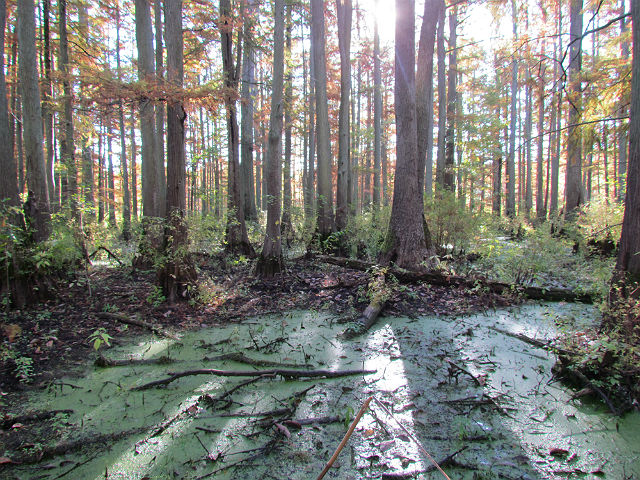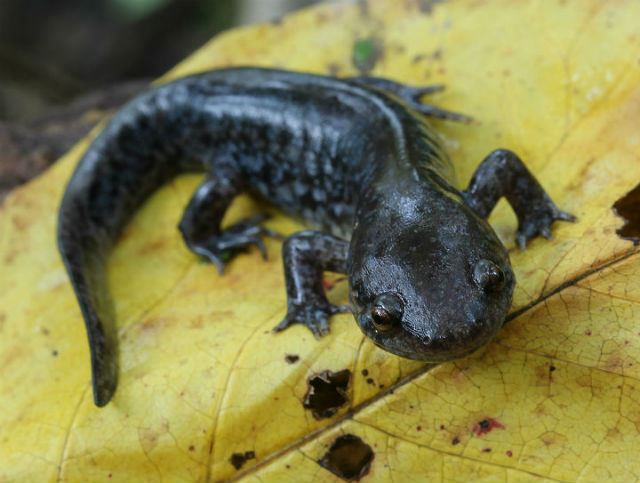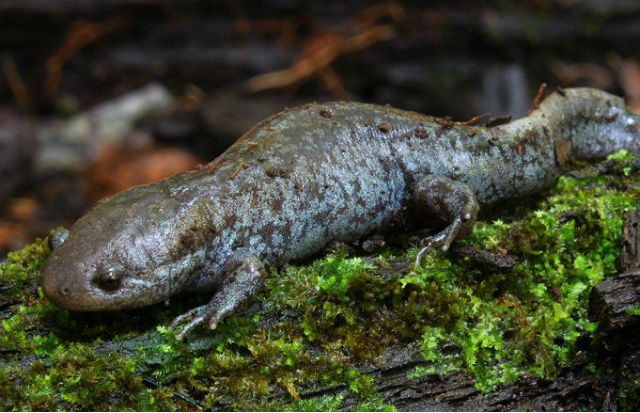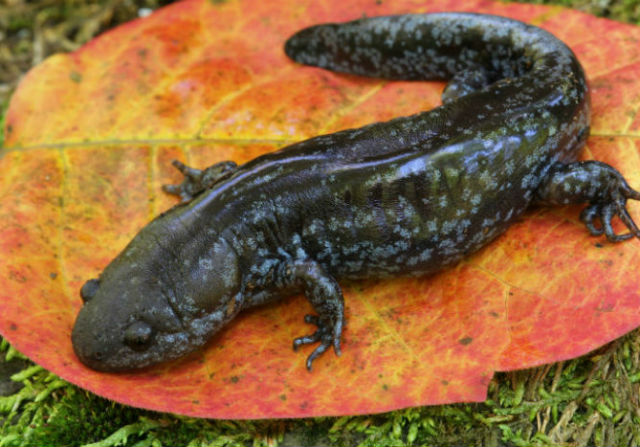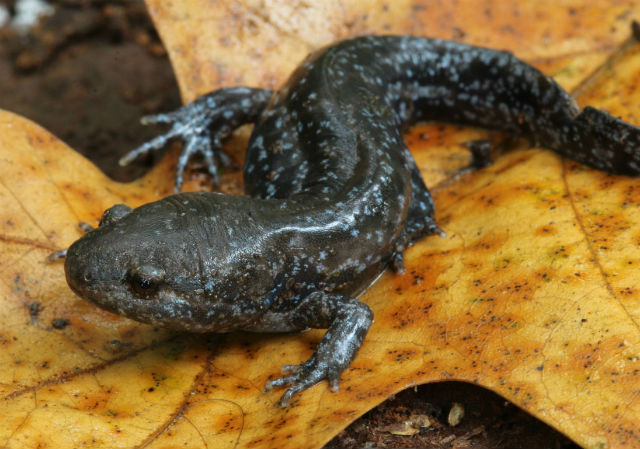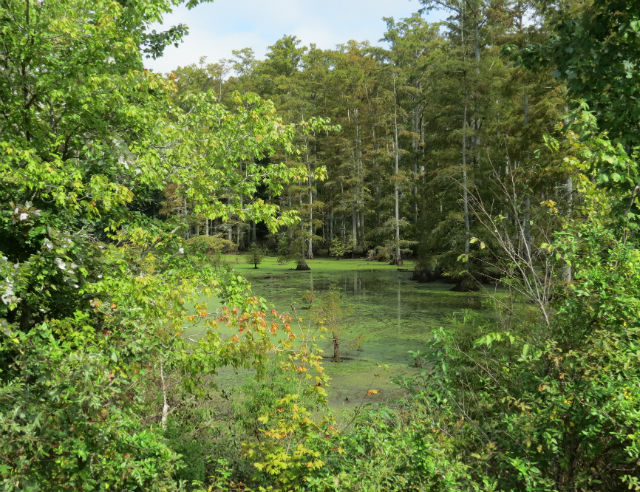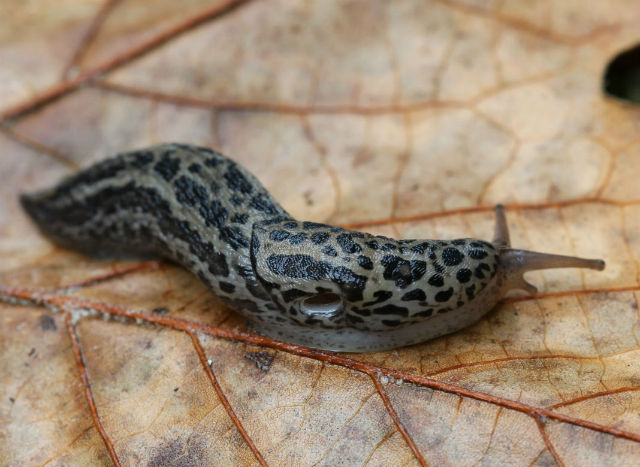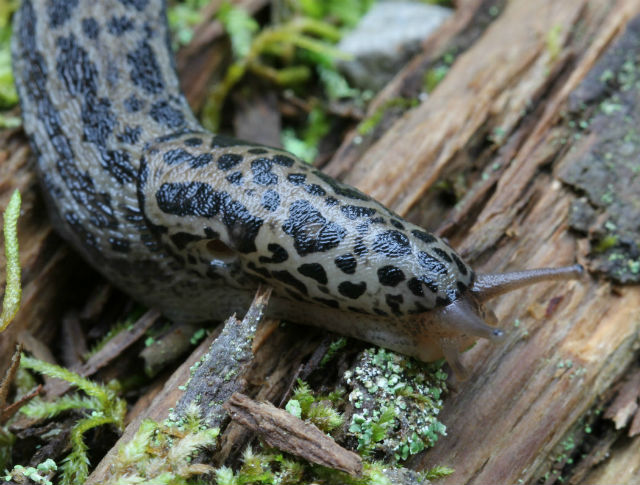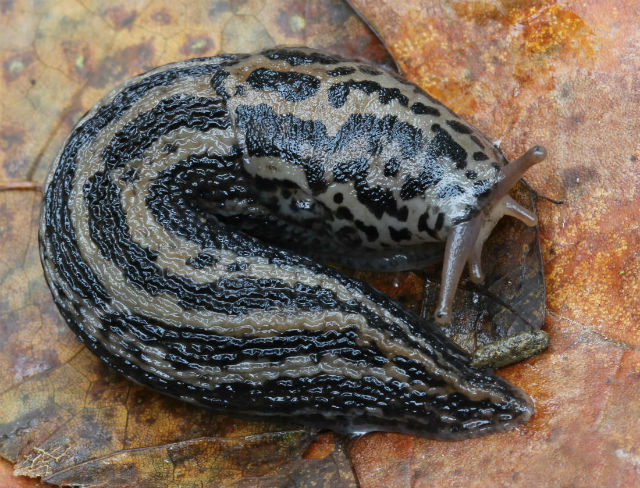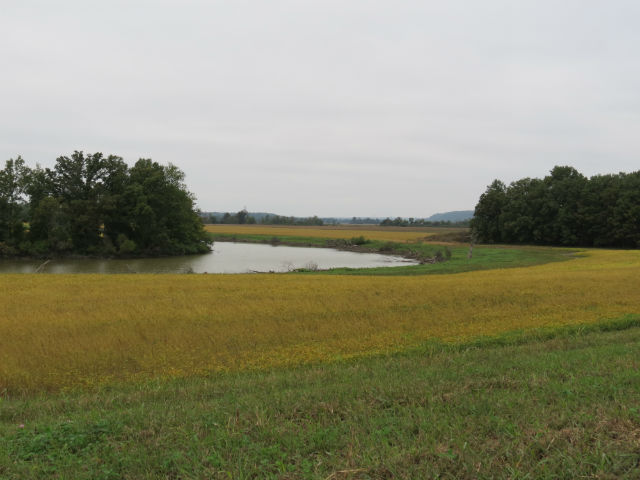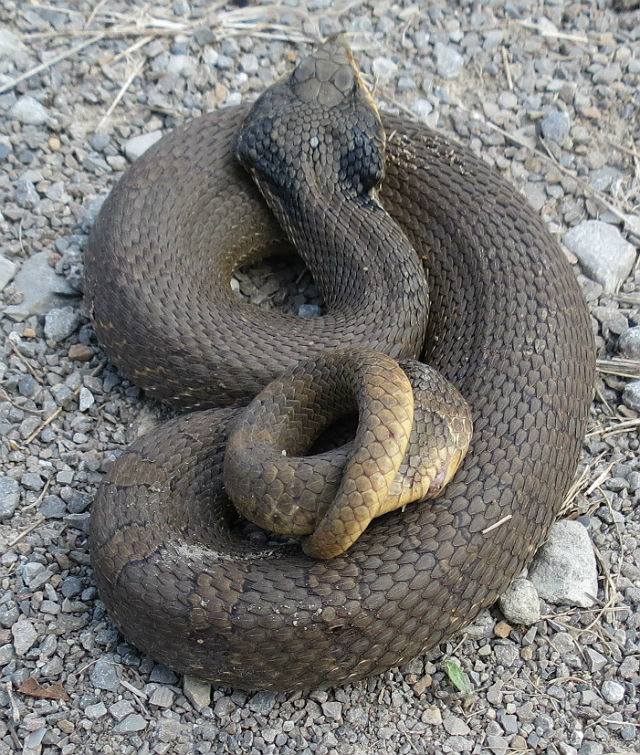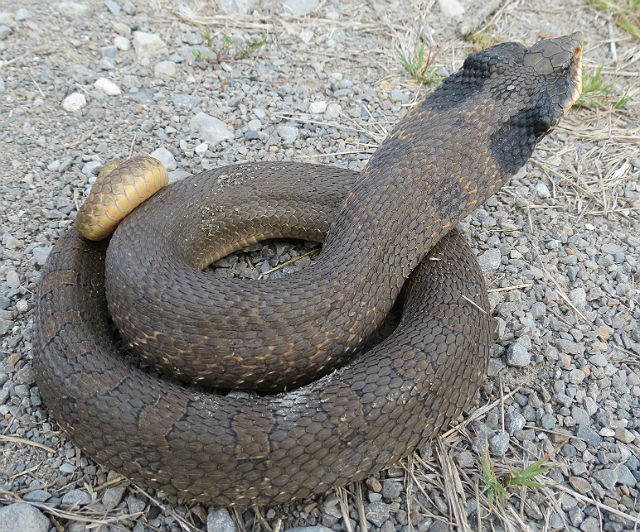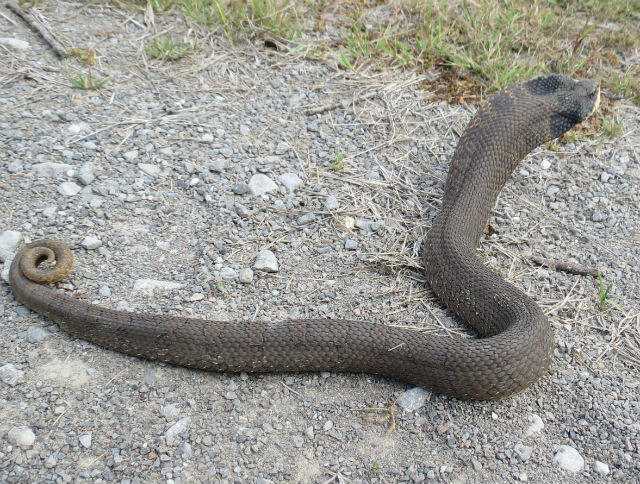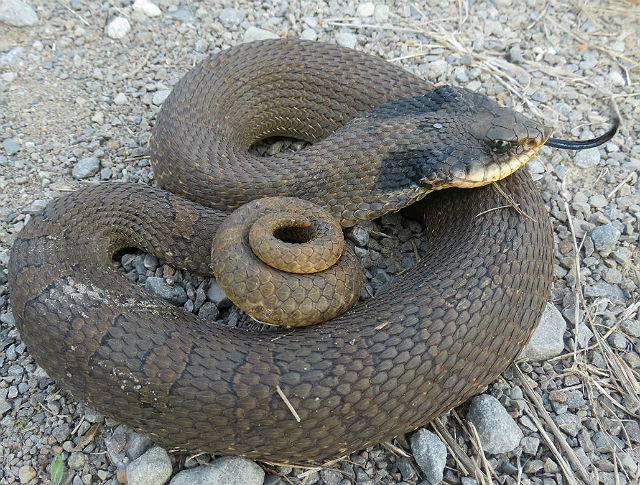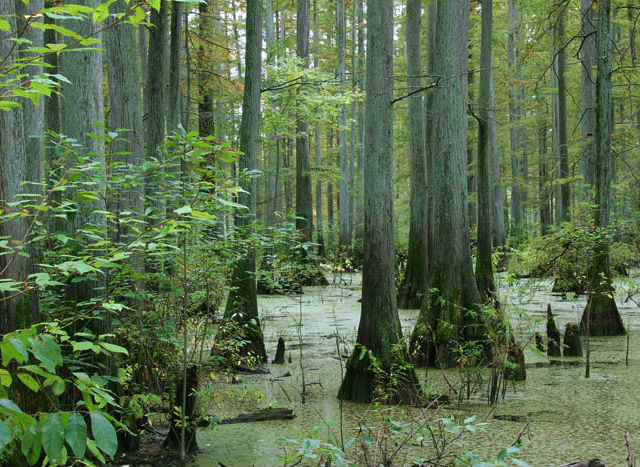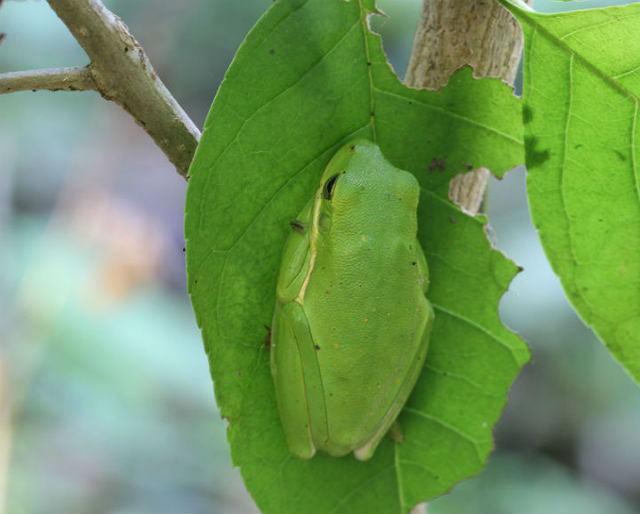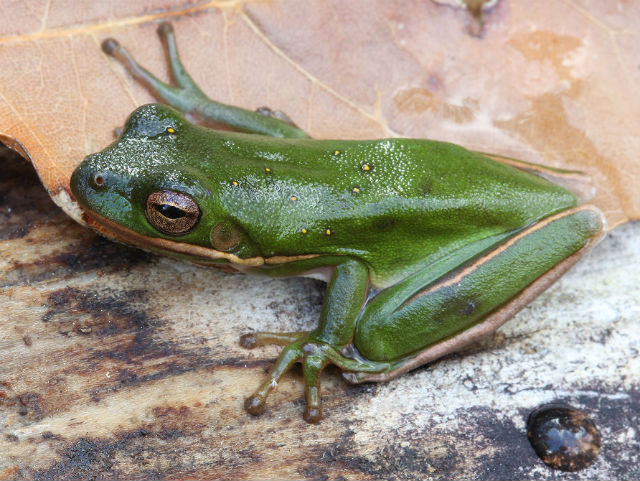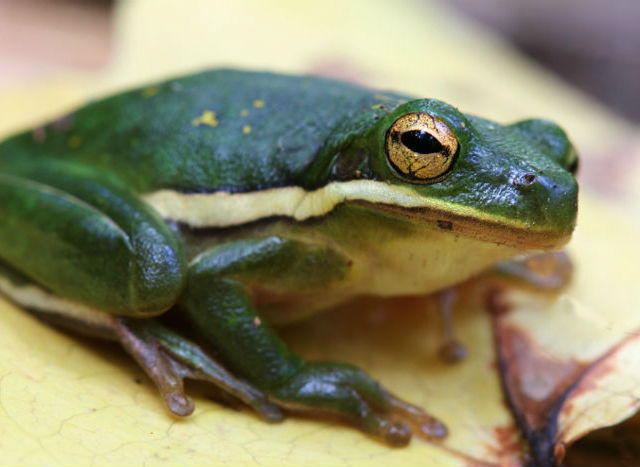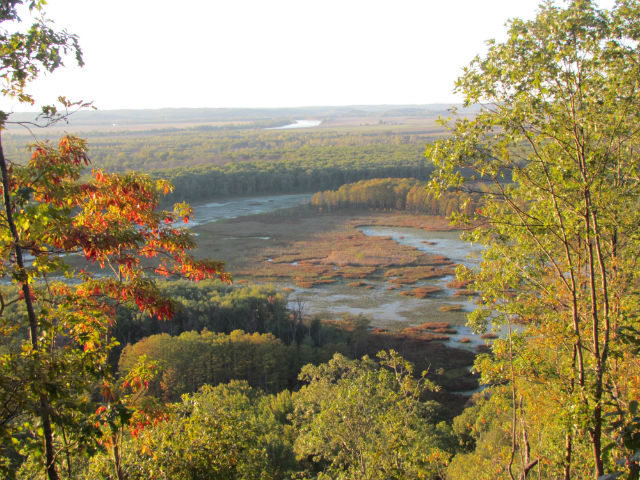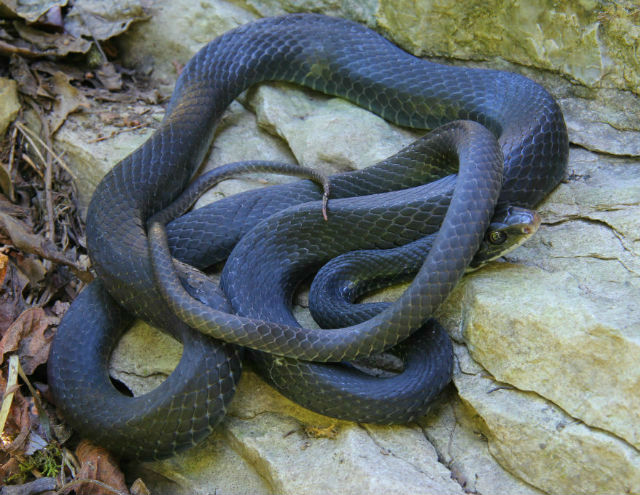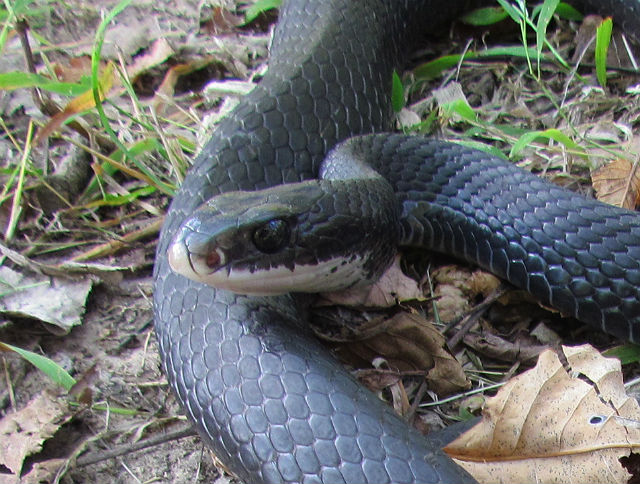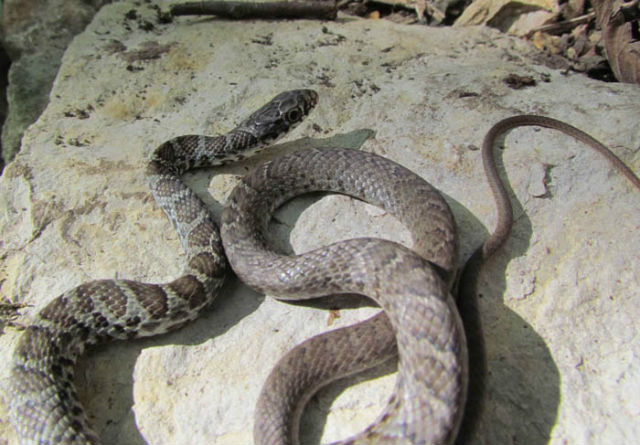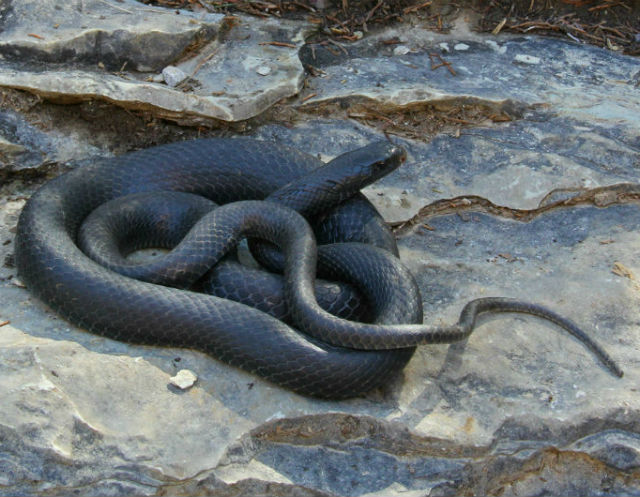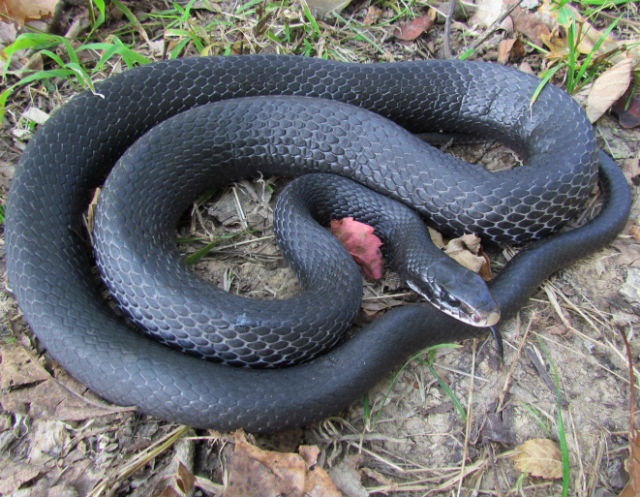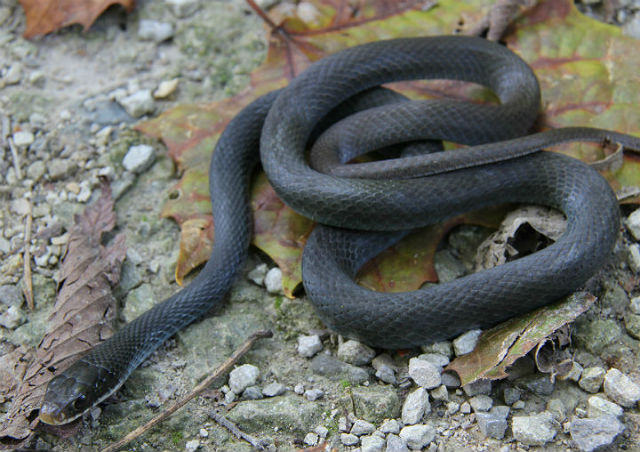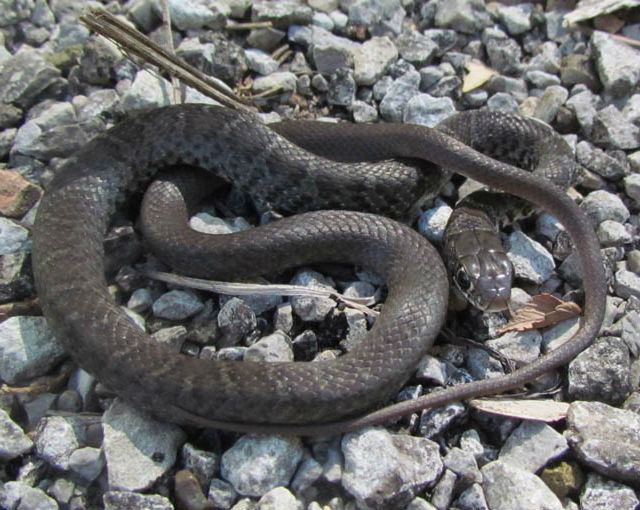This 3 to 4 inch amphibian seems to have a head and feet too big for the rest of the creature. It kind of reminds me of a Bulldog.
Mole Salamanders are black, brown or grey in color, with pale bluish or silvery flecks. Adults are found in forested habitats like bald cypress and tupelo swamplands, flatwoods sloughs and nearby ponds. I sometimes find them under logs or in moist leaf litter.
These were all from a swamp edge I investigated while visiting southern Illinois. Adult Mole Salamanders are nocturnal and burrow during the day; their common name comes from their underground lifestyle.
Adults move to fish-free pools or swamp edges for courtship and egg-laying during late autumn and winter rains. Females attach 200-400 small eggs, in jelly-covered clusters, to underwater twigs and leaves.
Mole Salamander larvae transform during summer or autumn and, in a few permanent ponds, some large larvae are known to overwinter. They have gills and breathe like fish until they metamorphose into adults.
It is always cool to come across this oddly proportioned amphibian, which is not native to my home state of Ohio.

